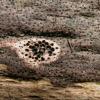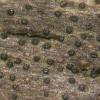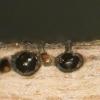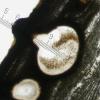
27-11-2025 15:41
Thomas LæssøeSpores brownish, typically 4-celled; 26.8 x 2.4;

27-11-2025 12:01
Thomas Læssøehttps://svampe.databasen.org/observations/10496727

27-11-2025 11:46
Thomas Læssøehttps://svampe.databasen.org/observations/10493918

27-11-2025 11:31
Thomas LæssøeCollectors notes: Immersed ascomata, erumpent thro

23-09-2025 13:31
Thomas Læssøehttps://svampe.databasen.org/observations/10534623

25-11-2025 14:24
Thomas Læssøehttps://svampe.databasen.org/observations/10490522

26-11-2025 18:13
The entire run of Mycotaxon is now available throu

25-11-2025 11:03
Mick PeerdemanHi all,One of my earliest microscopy attempts, so
Related to the thread of Daniel Ghysenlinck I know put data about my unidentified Eutypa collections which were made on Fagus sylvatica.
Description: Fruitbodies very inconspicuous, from some distance only a darkening of the wood. With the naked eye the ostioles could just be seen as tiny black dots on the blackish surface. The Stroma with the scattered perithecia is about 0.5 - 0.6 mm thick. Perithecia are about 0.4 mm broad and 0.3 mm high with a neck length of about 0.25 mm. About 0.15 mm of the neck is within the stroma and only some 0.1 mm protruding as a semiglobous structure (see photos).
Microscopy: Asci are typically long stalked with a spore bearing part of about 25-35 micrometers. Apical apparatus is very faintly and inconspicuously bluish in Iodine. Spores are brownish, allantoid and 6-9 x 1.8-2.2 micrometers with 7 x 2 beeing the average.
Ideas are very welcome. Ask if you need further morphological details.
Thanks very much
Stefan

I have not checked microscopic characters, but why not consider Diatrype decorticata ?
Yannick
This seems to be a good idea to follow. Thanks for the Input!
Stefan
Alain

I think Alain is right.
Yannick
This is definitly a name I came by during my researches. Can't remember why I discarded it again. Probably because there is little illustration and documentation on the species. But I will definitly focus on this now and compare characters with literature about E. lata.
Thanks again
Stefan




